#and have a whole section in their profile about how exploring character death is good and objecting to that is childish
Explore tagged Tumblr posts
Text
well. uh. my fanfic has finally attracted the attention of a Person I Definitely Don't Want to be Friends With. I mean at least they didn't insult me or anything and seemed to actually like the story but I feel weird being perceived by such a person at all. I'm just going to slink away on the ground like a flattened Snoopy
#this is NOT about anyone on tumblr#(also it happened on FFN not AO3 and I don't even link to FFN here...)#i feel weird posting anything tooooo specific in case they find this post somehow#but I feel like they EXTREMELY missed the point of why I wrote the story or any of my stories -#are apparently anti-gay -#and have a whole section in their profile about how exploring character death is good and objecting to that is childish#maybe Let's Not Meet#I'm honestly surprised this person didn't object to the sex scene but whew#why do I finally get reviews and it's weird shit???#the greatest compliment in the whole review was 'solid' anyway so like what was the point#(also I don't know why I'm they/themming him. this was a man. said so in his profile.)#no I can't get over 'I don't suppose he [DvD] will ever see it' - he'd BETTER NOT?!?! omg that is a nightmare scenario!#(and it's not just about him! there are two actors and two characters here that I love very much!)#(and I write because of the characters and NOT the people except insofar as they created and portrayed them!)#my original post
0 notes
Text
Review: Medea (1983), A Doll’s House (Garland 1973)

Image source: IMBd
Mark Cullingham’s 1983 TV movie Medea is based on Euripides’ treatment of the myth in his enduring, ancient Greek tragedy of the same name. An outsider and Barbarian, the sorceress Medea (Zoe Caldwell) calculates revenge when the King of Corinth gives his daughter's hand in marriage to Medea's husband Jason (Mitchell Ryan), also exiling her and her two children.
The visually minimalistic set is reminiscent of an ancient Greek amphitheatre. Several stone steps form a platform on the main stage. These steps lead to a grand, skene-like, double-door entrance. Similar steps are on both sides of the double doors like parodos and a seat-like stone central to Cullingham's stage that Cullingham’s characters stand on, sit on and at times, weep on. Time of day and a plein air is affected by ominous lighting changes. Although main characters would have performed from in front of the skene in Euripedes’ day, only Medea enters and leaves through it which I think is an effective choice visually. Whilst we watch the Nurse and chorus interact during the prologue, we cannot help but wonder what awaits behind the doors and when they will open. Caldwell’s eventual appearance through them as Medea, dressed in a distinct, dark purple dress with a scarlet throw, is hair-raising. From the skene, she coronates the set with an inescapable heaviness that grips you until the end. Imagination fills in the rest of the period setting without allows us to focus on Robinson Jeffer’s rich script. I think this production is better off without a full setting: the words are the action and the setting is moreso the rattled mind of Medea than Corinth.
Zoe Caldwell does not just play Medea but appears to become her mind, body and soul. Her face and voice are used to great effect, but what I will not forget is her gestural performance. It is brilliantly uncomfortable to watch her body and arms awkwardly contort with grief and her laboured breathing. The viewer perhaps feels as though they are witnessing a private, domestic breakdown. Some viewers may not appreciate that the Athenian audience was xenaphobic and patriarchal and that in reality, a foreign woman exiled alone with two children was as good as a death sentence. “I am undone, I have resigned all joy in life, and I want to die,” (255) says Medea in the Kovacs translation. Even still, viewers will get a strong sense of the depth of her trauma just from her physical performance, which again, is not unlike the first Grecian actors who were required to perform very physically from behind masks to crowds of possibly 15, 000. Caldwell is very well supported in the rest of the cast, especially by Dame Judith Anderson’s Nurse who brings all the sensitivity of maturity and no doubt a strong sensibility from her own Tony award-winning portrayal of Medea in 1947.
With the same cast, this production of Medea ran successfully at New York’s Cort Theatre in 1982 with what appears to be very similar staging. However, Cullingham seizes the opportunity to elevate the viewing experience through delicate and well-considered camerawork. In ancient Greece, the chorus, made up of around twelve actors, would perform from a section of the amphitheater called the orchestra between the skene and the audience. Their parts were sung and very heavily choreographed. Stood between the main actors and the audience, they were able to interact with either. In this film, it is the camera that seems to dance, especially with the chorus of three, between the actors and stand in for the viewer. At times, we feel that we are standing with the chorus looking on in fear, apprehension, sympathy and horror. At other times, we are staring into Medea’s glistening eyes, reading her thoughts. Unlike theatre, it allows Cullingham to amplify one character’s point of view over another’s at any given time.
So, how does Euripides handle identity in his treatment of the myth of Medea? In episode one of the play, Medea delivers the famous speech to the chorus in her first, onstage acknowledgement of her circumstances (“I would rather stand three times with a shield in battle than give birth once”).Ironically, non-Athenians and women were not allowed in the audience of plays in Euripides’ day and only male actors could portray the characters, yet Euripides explores how relationships and status affect a collective perception of an individual’s identity, specifically of a foreign woman who has been abandoned. “I trust you that much the less than before,” says Creon to Medea in pronouncing her exile. When she was still within the security of her marriage to Jason, Medea was only just, if not, a lesser trusted member of the community, especially to the ruling patriarchy who have the power to affect her place there. Outside of her marriage to Jason, she has noone “to shelter [her] from this calamity” (255) and is regarded like a dangerous, undocumented person in the modern world.
Euripides also seems to make the point that the strengths a woman might hold are regarded as a liability even in vulnerability. It is arguable whether Medea would have committed the same crimes had she been treated with more compassion by Jason and Creon, but this is still clear: Creon says that “a clever woman who keeps her own counsel” is more dangerous than “a hot-tempered man” (320). While this very well may be true, the inequality is audible. Would Medea be treated with more compassion if she was not a sorceress? Creon is rewarding Jason with his daughter’s hand in marriage for the exploits that Medea was instrumental in and is exiled as a result. Euripides seems to be saying that either way, she cannot win.
Through Medea’s speech, Euripides also contemplates the collective identity of women in general and how it is molded by the powers that be. “And the outcome of our life's striving hangs on this, whether we take a bad or a good husband” (235). Although she is more than the average mortal, the powerful sorceress is able to identify completely with women by virtue of being a woman. In her explosive exposition of the position and prospects of a woman in a patriarchal society, Medea’s pinpointing of all the forces at work pulling and pushing against her cause the audience to ask, “then, what is a woman?” Therefore, the identity of women is presented as a question that is left unresolved even by the climactic end in which Medea is arguably vindicated.
What I find most striking about how identity is presented in this episode and throughout the whole play is that Medea presents herself. It is as though Euripides lets her speak for herself to define to us who and what she is even in her damaging circumstances, rather than defining who she is for us. Even the prologue in which the Nurse provides extensive background about the character of Medea serves as a sympathetic set up for our first introduction to the character. In this way, identity is presented as an aspect of the self that can only be fully presented by the self. And I think this is the great strength of the play.
This review was written with background reference to “The Sociology of Athenian Tragedy” by Edith Hall, “Ancient Greek Theatre” by Sarah Grocola and Playbill’s profile of Medea (1982).
2 notes
·
View notes
Text

FLP FEATURED AUTHOR OF THE DAY: Sean Murphy
Sean Murphy has appeared on NPR’s “All Things Considered” and been quoted in USA Today, The New York Times, The Huffington Post, and AdAge. A long-time columnist for PopMatters, his work has also appeared in Salon, The Village Voice, Washington City Paper, The Good Men Project, Memoir Magazine, and others. He has twice been nominated for the Pushcart Prize, and served as writer-in-residence of the Noepe Center at Martha’s Vineyard. He’s Founding Director of 1455 (www.1455litarts.org). To learn more, and read his published short fiction, poetry, and criticism, please visit seanmurphy.net/ and @bullmurph.
TO ORDER GO TO: https://www.finishinglinepress.com/product/the-blackened-blues-by-sean-murphy/
ADVANCE PRAISE FOR The Blackened Blues by Sean Murphy
The blues has often been the shadow of genius and can be considered survival music. Sean Murphy gets inside life’s marrow. When he writes about Charles Mingus or Billie Holiday on her deathbed, Murphy begins to explore salvation and sorrow. In many of his poems one will find the ethos of the blues – the Howlin’ Wolf. John Coltrane, Jake LaMotta, and Charles Bukowski are profiled in such a way that one is convinced Murphy is looking at their x-rays or has found the doorknob to their souls. In his poem about Bukowski, Murphy writes “Life lets you steal when it’s looking the other way.” Here Murphy seems to be “worryin’ the line” and causing the reader to almost repeat it. There is a hardness wrapped in tenderness in The Blackened Blues. He sees and understands the “beautiful blackness” – the mood and sensibility that is not restricted by race. Murphy writes about a condition, something linked to art and creativity; something that might drive a person like Sun Ra to explore another space or sphere. Oh, and then Bud Powell walks in only to remind us about our mortality, the black and white keys of life – The Blackened Blues.
–E. Ethelbert Miller, Writer and literary activist, Host of On the Margin (WPFW 89.3 FM)
The Blackened Blues is a kaleidoscopic, deep, and opulent journey into the psychic impulses that created the language of a cross section of many great artists in the modern world: it intersects with the construct which is society, and the contradictions that are generated from there. I feel in the portraits of the jazz musicians the rhythm and vibration of their brain forging their cosmos, and the transcendence attained generating its own counter-strikes—which could lead to silence and or destruction. In reading this collection I bumped into ideas being explored in a poetic way that I have pondered before in my own way, so it was a crucial reading for me. The implication that Charlie Parker was the vessel of a cosmic stream of pure vibration in the same way that Bach was, but Bach enjoyed a social placement that allowed him to find a sort of equilibrium in life that escaped Parker, is at once, provocative and defiant. More, despite the mystical purity of Parker’s language, who is to say where boundaries begin and end in an open system in the miracle of life, so what place does a synthetic substance create when it enters into the brain rhythm? With Bud Powell you feel that since nature is always improvising, and since Bud is attuned to the surge, nature is coursing through him that we get to enjoy through the patterns created, but how much did a police officer’s nightstick rearrange these patterns? In Coltrane we look at how he expanded to glimpse the vortex that is the godhead, but then contracted cancer and was consumed by an organism within. And then there is Sun Ra, who basically tells everyone fuck you: not only can I construct alternate cosmologies but I am not even from your planet! Many things are explored in these pages, and many questions asked.
–Matthew Shipp, American pianist, composer, and bandleader.
Where to start? There’s a grand richness here in The Blackened Blues, and these poems may very well keep you up at night. Like good poetry everywhere, it’s hard to know where this stuff comes from. But Murphy is a good extractor. He has a great sense for finding subjects—everything from Bud Powell to Clarence Thomas and Jake LaMotta. Some of these are dense poems which at their best move beyond verbiage to inspiration.
The jazz world is an important source for Murphy, and the sense of how fleeting it is finds an analogue in “Shafi Hadi’s Silence.” Reading his poem on Coltrane will change forever how you think of him. Murphy sometimes tries to find an essence in his subjects and often succeeds: “Captain Ahab’s Oil” exemplifies how a wordless and insane quest can be given form.
As a former professor and jazz critic, I hear echoes of Bukowski here and a few others. Murphy’s themes range from Tina Turner’s legs to death and transfiguration. But to all his subjects he brings a unique voice, and it will pay you big rewards to listen.
–John Goodman, Former Jazz Critic, Playboy, author Mingus Speaks
By turns irreverent, funny, scathing, always intelligent, the poems in The Blackened Blues are Sean Murphy at his virtuosic, full-throated, twelve-bar best. These poems do not “lie down mutely in darkness;” they sing.
–Justen Ahren, author of A Machine for Remembering.
In his debut chapbook, The Blackened Blues, Sean Murphy “throw[s] sparks at the darkness,” illuminating the complex lives of characters both real and imagined––from Charlie Parker to Kurt Vonnegut to Captain Ahab. A deft necromancer, Murphy spins a collection of gritty yet lyrical poems that unmask the famous and infamous alike––seeking answers and at times, redemption for his subjects. At its core, this collection is an exploration of “the hot urgency of some holy inspiration.” How is it that the flames of creativity burn brightly in some while consuming others whole? These incandescent poems have some light to shed on the matter.
–Linda Flaherty Haltmaier, Poet Laureate of Andover, MA, Award-winning author of To the Left of the Sun
#flpauthor #preorder #AwesomeCoverArt #poetry
1 note
·
View note
Text
Star Wars Jedi: Fallen Order Review
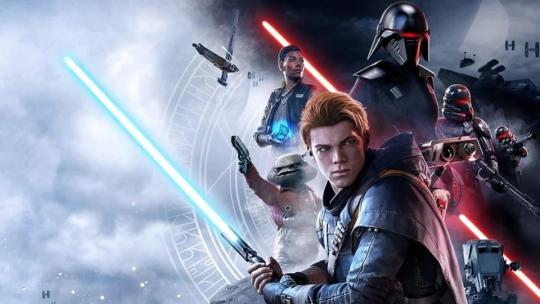
Before the dark times, before the mouse empire, LucasArts published several fun, memorable Star Wars video games, from Star Wars: Bounty Hunter to The Force Unleashed series. After Disney’s acquisition of LucasArts in 2012, the Mouse House stopped all internal developments at LucasArts and laid off most of its staff in 2013. Signaling its turn to the dark side, Disney awarded EA (voted worst company in America multiple times) a multi-year license to create Star Wars video games.
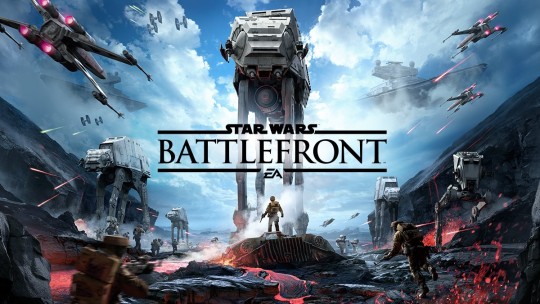
EA rebooted the Star Wars Battlefront series (2005′s Star Wars: Battlefront II has to be one of my most played video games) and released the new Star Wars Battlefront in November 2015. Critics acknowledged the game’s great graphics and visuals, but it quickly became apparent that the game lacked content. The hero and villain rosters were very limited, and the game only included content from the original trilogy, not the prequels.
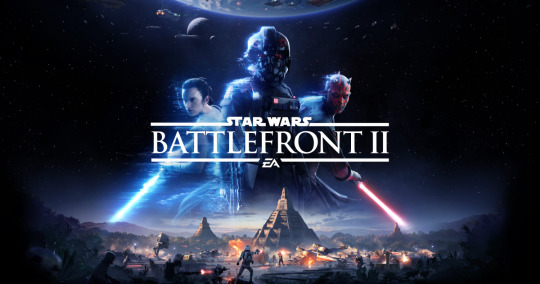
Then came EA’s disastrous Star Wars Battlefront II, the repercussions of which shook the gaming world. Released in November 2017, Battlefront II had some promise. It was the first game since the Disney takeover to feature a single-player story mode that was canon to the film series. The game also contained content from the prequel, original, and sequel trilogies. Additionally, EA greatly expanded the hero and villain rosters. However, EA showed it true colors with the game’s loot boxes, which could award players significant gameplay advantages if they purchased them with real money. Essentially, the game turned into a pay to win system, thereby making players who did not purchase loot boxes feel so disadvantaged that Battlefront II virtually became pay to play.
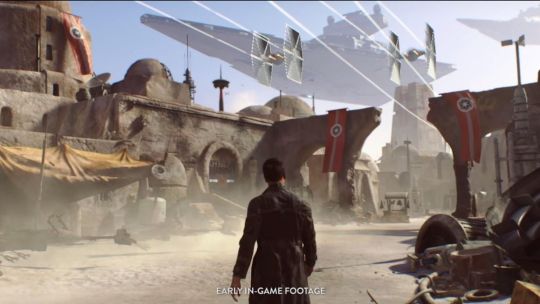
Although Visceral Games, the studio behind the Dead Space series, was developing a single-player Star Wars game, even getting to the point in the development process where they could tease everyone with in-game footage, EA canceled the game and shut down the studio. Not counting the Lego Star Wars games and mobile games, EA’s Battlefront games were the only new Stars Wars video games on the market, an astonishing reality compared to the rate at which LucasArts used to produce games for the franchise.

Eventually, EA finally came to its senses and assigned a single-player action-adventure Star Wars game to Respawn Entertainment, the studio behind the Titanfall series. Former Santa Monica Studio employee Stig Asmussen served as game director, and heavy-hitting talent like writer Chris Avellone, perhaps best known for his work on Fallout: New Vegas, joined the project. Finally, Respawn released Jedi: Fallen Order in November 2019 to much critical acclaim.
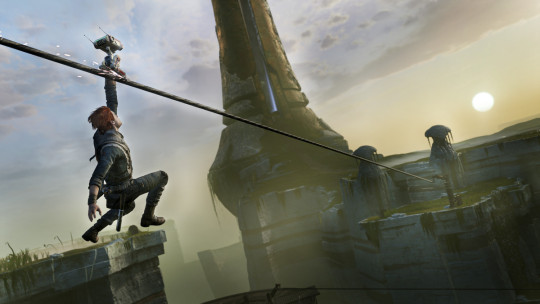
Now, with that long-winded background introduction establishing the recent state of Star Wars video gaming out of the way, let’s get into the real reason why everyone is here. What did I think of Jedi: Fallen Order? I am usually well behind on newer video game releases, but our current state of affairs with the global pandemic has afforded me a bit more time to dust off my controller. Having just beaten Fallen Order earlier this week, I have plenty to say about the game. (I even made a pros and cons list! Can you tell I have also been spending my time watching the misadventures of Leslie Knope and company in Parks and Rec?)
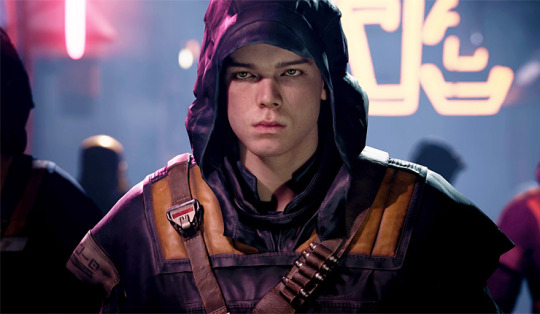
At its core, Star Wars is about family, friendship, and good versus evil, so let’s start by talking about this game’s characters and plot. (Don’t worry; I won’t spoil anything from the story.) Fallen Order nails the spirit of Star Wars. Set five years after Revenge of the Sith, players control Cal Kestis, a Padawan forced to keep a low profile after the Jedi Purge. Cal lives on the planet Bracca, where he works as a scrapper salvaging ships from the Clone Wars. Kudos to the game here. I stopped a couple of times just to admire the visuals of Bracca. It was definitely a “wow moment” seeing TIE fighters shriek by overhead and watching a Separatist ship descend from the atmosphere. One day, Cal taps into the Force for the first time since Emperor Palpatine’s Order 66 to save a friend from certain death from a workplace accident. Unfortunately, an Imperial probe droid records the incident, alerting the Empire of a Jedi fugitive. Two Inquisitors quickly arrive on the scene to track down the Jedi. Introduced in the animated series Star Wars Rebels, the menacing Inquisitors are an evil organization of Force-sensitive beings, some of them former Jedi, who have been tortured and turned to the dark side by Darth Vader and the Empire or otherwise willingly joined the organization out of hunger for power. They are tasked with hunting down surviving Jedi in hiding and others exhibiting Force potential. Somehow, Cal has survived this long even though he still carries around his lightsaber with him everywhere! When the Inquisitors corner him, he literally just pulls it out of his pocket! How has no one ever noticed it before? Did none of the Imperial probe droids floating around the planet ever take a snapshot of the weapon? Plot holes aside, two new characters, Greez and Cere, rescue Cal from certain doom at the hands of the Second and Ninth Sisters and ferry him off world.

Cere is a former Jedi who held the role of Seeker in the Order. A Seeker located infants with Force abilities who could be taken to Coruscant and trained in the Jedi arts (think the good version of the Inquisitors). Greez is a starship pilot with a bad gambling habit, a green thumb, and an insatiable appetite. Cal finds a small droid named BD-1, who reveals a message from Jedi Master Eno Cordova, detailing the existence of a hidden Jedi Holocron containing a list of Force-sensitive children across the galaxy. In the wrong hands, this list could lead to the children’s demise. Cal and Cere want to use the list to rebuild the Jedi Order. Thus begins the race between the Empire and our crew of ragtag misfits to secure the Holocron.
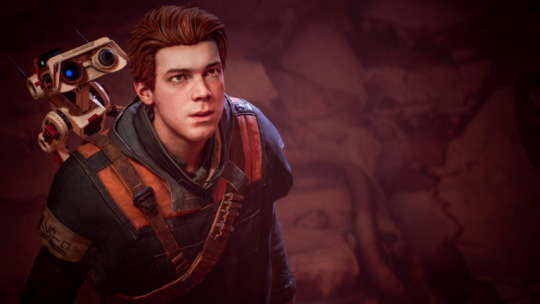
Overall, the story is good, great even for recent Star Wars standards. It fits the Star Wars cannon very well, and I loved the nods to the Clone Wars, mentions of obscure characters, and the foreshadowing of future events. Some moments elicit chuckles from the appropriate Star Wars humor, while others go to some truly dark places. The way the game tackles Order 66 earns it extremely high marks from me. The developers need to be applauded for bringing in new and relatively unknown planets that we have not really had the chance to explore before. There is no Hoth, Jakuu, or the like to be seen here, thankfully. Star Wars is a big galaxy; it is about time we saw different parts of it. We have spent more than enough time on Tatooine. The planets we do visit feel alive. Each one has a different color palette, climate, weather pattern (although the developers may have been a little heavy-handed on the fog in a few of the locations), and, of course, flora and fauna.
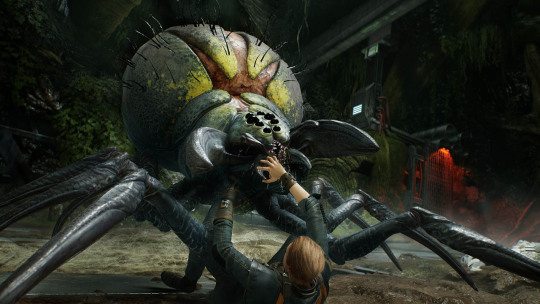
Cal fights everything from annoying rat creatures to ram-like slugs, from giant venus fly traps to trampoline spring-plants. Players can even collect plant specimens on different planets and plant them in Greez’s terrarium, which was a nice little way to take a piece of each planet with you on your journey. Oh, and the spiders. Cal has to kill tons and tons of spiders. Again, this is Star Wars! There is a whole galaxy at your disposal full of creatures that look like whatever your imagination can dream up, and the best we get is different species of spiders? That is probably nitpicking, but it felt like it was worth pointing out.
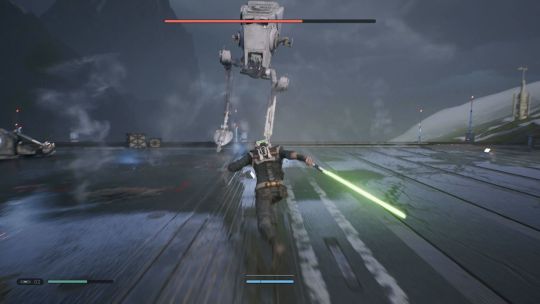
When it comes to the Empire, however, the variety is fantastic. Of course, the run-of-the-mill standard stormtroopers are here, but there are also variations like shock baton-wielding scout troopers, flame troopers, and the dangerous Purge troopers, essentially the special forces of the Inquisitors. The chatter between the troopers is great. Before they spot him, Cal can overhear them talking about their notorious accuracy, the planet’s hostile wildlife, or even mundane topics like food rations. Once Cal starts fighting them, they often taunt him, full of confidence in their abilities, but then they come to the realization that they are facing off against a Jedi. The confidence in their voices gradually turns to panicked fear as Cal slices through their numbers. By the time Cal gets to the last trooper standing, that trooper will regularly plead for his life or confess how scared he is. Every once in a while, the Empire will even throw AT-ST walkers at Cal, which are a fun enough challenge, though the strategy to defeat them becomes clear within a minute or two, and players are never forced to change up their tactics. I do love that after Cal destroys the walker, the trooper will crawl out of the wreckage and start shooting at him. Nice touch!

With all that said, the story is not perfect. In fact, once or twice it just feels dumb. For example, Cal goes on this grand mission seeking out an important leader in hiding, and when he finally encounters him, they exchange maybe one full sentence before the leader gifts Cal a rebreather so that he can swim underwater. You are telling me I conquered various obstacles and enemies, traversing across multiple planets all to get...a rebreather? This whole section could have been cut out and streamlined so that the storyline goes directly to the main setpiece of this planet I am talking about. Have one of Cal’s crewmates give him a rebreather and send him on his way instead. Regardless, at least the back and forth traversal gives players another chance to board the ship, ascend from the planet, and blast off into hyperspace. Seeing that never got old.

Respawn and its writers did a great job with these characters, including one of the Inquisitors (the other one is just kind of...meh). I enjoyed getting to know my crew, but I wish they had a little more to do in the game. In reality, they just stay on the ship 95 percent of the time while you are out running around on your mission (not that I entirely blame them...it is a cool ship). The conversations between these characters were usually good, but sometimes Cal would not mention huge, seemingly significant events or people he ran into to his crew! For a cinematic franchise like Star Wars, this game could have used a couple more cutscenes. The game often feeds the plot or a character’s mindset to players by making them idly stand near a crewmate and tapping R3 a handful of times to get them to cough up a couple of lines of dialogue.
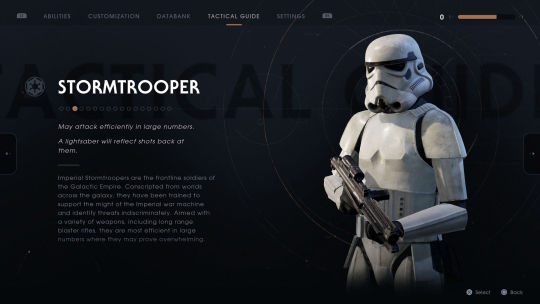
As is to be expected from a Star Wars product, the game’s music is terrific. Gordy Haab and Stephen Barton composed the score and recorded with the London Symphony Orchestra and the Bach Choir of London. Mongolian folk metal band The Hu also wrote and recorded a song that is featured during a couple of prominent portions of the game. The song lyrics were written in Mongolian and then translated into a fictional Star Wars alien language. The music compliments and elevates the game’s setpieces, with one standout part reminding me of Thor: Ragnarok. A couple of times, the game goes full John Williams to really make some moments hit home, and boy does it work! Hats off to Respawn for putting in this much effort in regards to the music for the game.
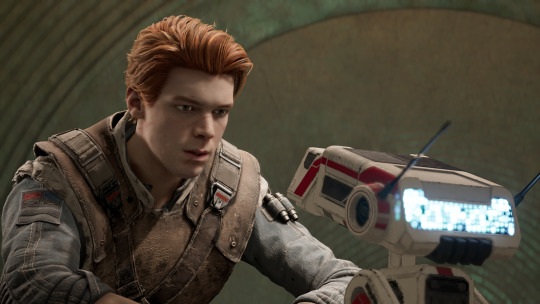
Getting into the gameplay, Fallen Order is an amalgamation of several other games. Dark Souls, Zelda, Uncharted, Metroid, Castlevania, Sekiro, heck even Sonic...they are all here in some form or fashion. Unfortunately for Fallen Order, it does not elevate the features it borrows from those games. The biggest reason? The bugs. Oh my goodness the bugs. How can a blockbuster release like this have so many bugs? Maybe it had something to do with EA or Disney wanting to push the final product out before the release of The Rise of Skywalker the next month, but the amount of bugs in this game are simply unacceptable. While none of them led to a complete game crash, I definitely caught myself grumbling, “I hate this game,” with my frustration levels constantly reaching the scorching temperature of Mustafarian lava, especially considering Fallen Order’s inexcusably long load times. Seriously, the load times after dying are so long that I had enough time to run to the bathroom, heat something up in the microwave, or make a cup of tea (to help relax me from this rage-inducing game) before the game finished loading. How can I lift off from a planet and travel through hyperspace faster than the game can respawn me after dying? It is not just dying, by the way. The game developers think they cleverly hid load times behind elevator rides, but that did not work either! At least throw in some elevator music or comm chatter if you are going to make me stand there for so long!
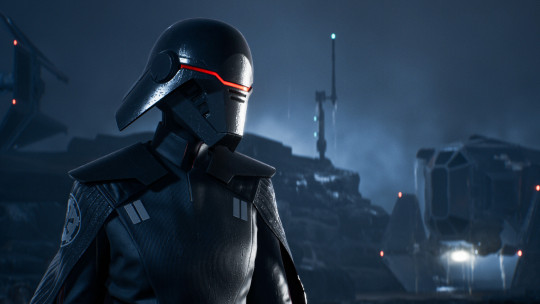
One time, I fell through the level to my death while walking on what was 100 percent solid ground. Speaking of solid ground, or should I say the lack thereof, enemies continued to fight me while clearly hovering in thin air when they should obviously be plummeting to their death. Woe is me if I tried to reach them, though, because my Jedi character must not have that ability, leading to, that is right, more death falls for me as the enemy looked on from his invisible sliver of ground above. If I was lucky enough to have an enemy remain in my relative vicinity and not stand off a ledge, that enemy had a chance of pinning and glitching Cal against a wall, leaving me trapped until I died from the beating. The enemy who kills Cal glows gold until players shave off a piece of that enemies health, which is great, but that means players cannot see that enemy flash red when he uses an unblockable attack. How could Respawn not notice this error when it is such an important component of the combat? For all the aggressive enemies with magical glitching powers, there were also those that would have a change of heart mid-combat and go pacifistic on me. I found this especially common in the later game and on one planet in particular with ranged enemies. They would fire at me, I would block their shot back at them and injure them, and then they would just stand there staring at me. It was really bizarre and made me uneasy turning my back on them to explore the area. I also experienced my health and Force bars completely disappearing from the screen. The first couple of times it happened, I thought it was intentional and meant that Cal could not die for that sequence of the game. Wrong! So much for thinking I was momentarily invincible with unlimited Force powers. This bug was especially crippling during big boss fights, as you can imagine. Respawn throws in some quick time events once in a while where players have to press the correct button in a very short amount of time. For the most part, I did not mind these, but one exception got my blood boiling. Cal is fighting a giant creature and ends up free falling. The game requires Cal to land in a very, very precise spot and pull of a quick time event. I cannot count the number of times I fell to my death during this part because of how finicky the game was being. Cal conveniently stumbles across every single icy or muddy slide in the galaxy during his travels, a way for the game developers to disguise a way to get players from point A to point B quickly, but these slides are also quite particular with when players jump and where they land. Another good portion of my deaths came from Cal not making a jump on one of these slides when he clearly had the distance or him seemingly landing and making the jump only for him to glitch and then fall backwards into a never-ending dark chasm. The game developers may have thought players would enjoy these slides, but I came to dread them.
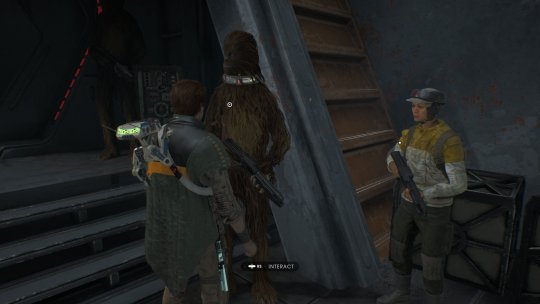
The worst game bugs by far, however, dealt with frame rates and level textures. Not contained to one section or even one planet, unfortunately, garbage frame rates wreak more havoc across the galaxy than the treacherous Empire. I am telling you the frame rate is absolutely abysmal in this game. I can forgive a drop in frame rate if it happens a couple of times, but it is like it is a built-in gameplay feature of Fallen Order. It was maddening! How can Respawn expect me to properly block or dodge if the game cannot even keep up with my movements or camera adjustments? Texture pop ins and clipping were also recurring issues. One time, I noticed a soldier’s helmet load in late. Another time, a Wookie’s fur took a while to fill up the character model. (By the way, the Wookies in this game look horrendous.) Sometimes, it would get so bad that the game would just pause completely so that it could load in the content of the area. I honestly thought the game had crashed and was about to reboot the console before everything stuttered back into place and Cal got moving again.
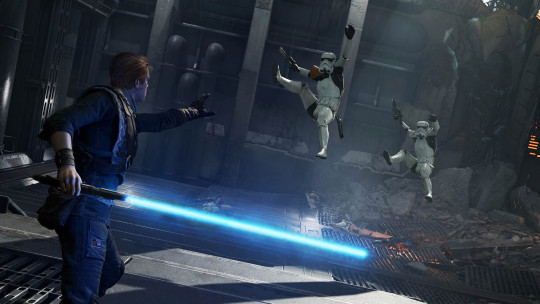
I have done a lot of ranting about the game’s flaws the last few paragraphs, so let me get back to some things I did like. The combat works well. I cannot begin to tell you how satisfying and occasionally outright hilarious it is to Force push a trooper off a ledge, especially when he is standing there trying to intimidate you. I had so much fun simply blocking stormtroopers’ laser bolts right back at them. Best of all, I started taking every opportunity I had to pull enemies toward me, especially ones perched up on higher vantage points, and stab them straight through with my lightsaber. The lightsaber boss fights were a highlight of the game. Players feel the weight of every strike and every struggle when the blades cross.
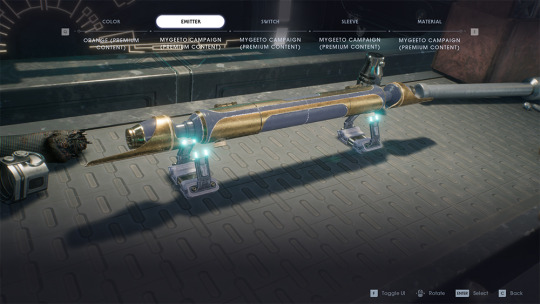
In addition to Cal’s lightsaber, he also has his Force powers at his disposal. He starts out with Force slow and gradually adds other abilities, such as push and pull, as the game progresses. Players may question how Cal, a Jedi, can struggle with a squadron of stormtroopers or the local wildlife, or they may ask why he does not start with all of his Force abilities, but it all makes sense when you consider that Cal has to rebuild his connection to the Force. He has not used it since he was a child, after all. It makes sense that this amateur padawan who did not complete his training runs into a tough time in combat. When Cal does unlock new Force abilities, the game cleverly flashes back to show Cal’s master teaching him that ability during his training before Order 66.
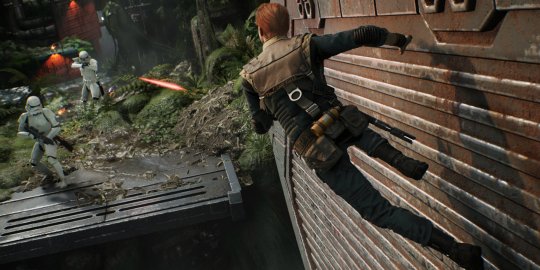
Players can further bolster their Force, survival, and lightsaber abilities through a skill tree. Skill points accumulated from defeating enemies grant players access to increased health, stronger stim potency, increased lightsaber damage, and mass push, to name a few skills. Even later on in the game when most of your Force abilities have been unlocked and Cal has found a couple of fun new gadgets, the game still feels balanced. Cal never feels overpowered like Starkiller in The Force Unleashed games. Even when they are maxed out, his Force push and pull do not appear to have much of an effect on bosses. At most, they will briefly stagger them, whereas when they do it to Cal, he will comically tumble over like Palpatine when Yoda Force pushed him across his desk in Revenge of the Sith.

I will argue that a couple of Force abilities become outdated later in the game. At one point, I forgot I even had Force slow because I had not used it in a while. I only remembered it while I was trying to solve a small puzzle to escape from an area and had exhausted all other options. Can you blame me for always wanting to Force push enemies off a cliff instead of slowing them down?
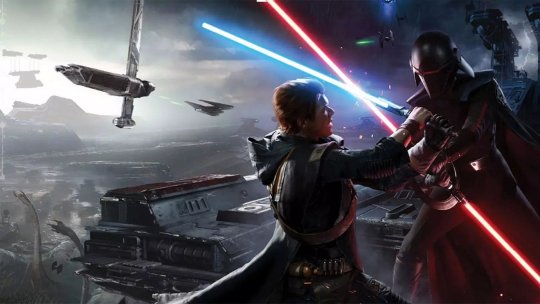
I appreciate that the game developers allow players to adjust the difficulty at any time. I started out at a higher difficulty and found myself dying before I even left the first world, Bracca. However, I persisted. That is, until I faced off against Oggdo Bogdo and his trash hitboxes. Players can stumble upon Oggdo Bogdo very early in the game. Oggdo Bogdo, a carnivorous amphibian creature, is a boss variation of the more common lookalikes of him. There is a similar optional alpha creature boss encounter on most planets Cal visits. No matter how hard I tried or how many different strategies I employed, Oggdo Bogdo proved to be too tough for me, and after waiting through countless death loads and having to run back over to Oggdo Bogdo’s location time and time again, I decided to lower the game’s difficulty, allowing me to finally slay this ugly creature.

Like Sekiro’s sculptor’s idols or the bonfires in Dark Souls, Fallen Order relies on meditation circles as its save points. Cal can rest to full health and restore his Force meter as well as restock health stims. Meditation circles also allow players to access the skill tree and spend skill points. These meditation circles implement a good risk versus reward system. If players choose to rest at a meditation circles, all of the enemies he or she has defeated since the last rest will respawn. I regularly found myself weighing the pros and cons of my situation, questioning if I should heal and get more stims or push on so that I did not put more enemies in my path.
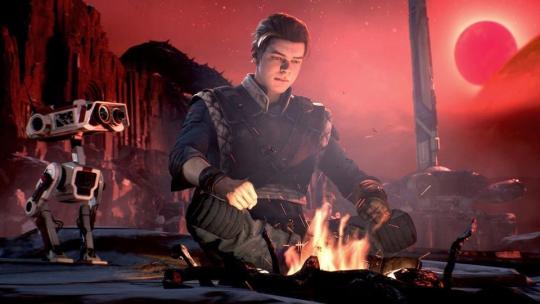
While I am on the subject of these meditation circle save points, I have to point out that Fallen Order does not have fast travel. Instead, it encourages players to backtrack and explore previously inaccessible areas that they can now open with their newly unlocked abilities. This was fine for a while, but I quickly grew tired of it when I noticed how much of the backtracking had me slowly climbing, traversing across narrow walkways that Cal has to carefully balance on, or shimmying over narrow cliff edges. This is padding by exploration. While the vine and rope swinging was fun, especially with Force pull, I stopped enjoying climbing up a conveniently placed arrangement of vines and the like by the halfway point of the game, if not earlier. I will admit that I believe Fallen Order contains just the right amount of playtime, but this stuff had it teetering on the too long side. This is compounded by one important world that players have to visit multiple times that feels too big. The developers’ creativity and excitement got a little out of hand here. Just pull up the map of that world to see how unwieldy it is. When I completed the story on a planet like this, I felt exhausted rather than triumphant. Why can’t I hail my crew to come pick me up in the ship where I am rather than having to run across the entire planet again to get back to the landing pad, fighting the same enemies I already cleared out a couple of hours ago? The game developers do provide a few shortcuts that players can open, but the amount of time they end up saving is negligible in some cases.
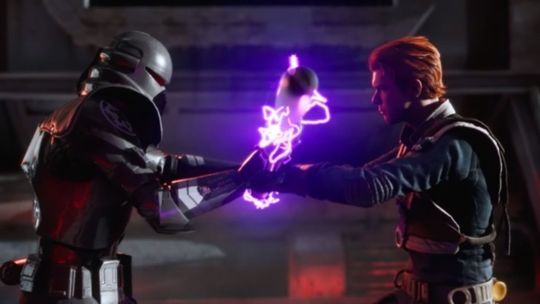
I was disappointed that there is no real endgame content. Sure, players can continue to explore or fight enemies for the heck of it, but the developers could have done so much more. After players unlock every ability in the skill tree, the skill points they collect after that become meaningless. I will confess that I chose to rush past enemies to get to my next destination rather than waste time or energy fighting them for the 50th time after I had filled out my skill tree. Why not unlock fast travel after players beat the story? How about adding in a fighting arena where players can test their maxed out skill set against waves of enemies? Heck, let the players unlock dark side Force abilites like Force lightning or Force choke after they complete the story so that whatever they do then is not canon. I would have continued to gather skill points for that!

Now I mentioned Cal’s droid companion BD-1 earlier, but BD-1 deserves a special shout-out. BD-1 is spunky and lovable. Not only does BD-1 shoot Cal stims to heal him, the droid also provides hints for puzzles, scans enemies to suggest tactics to take them down, plays recordings that push the story along, and helps Cal navigate the worlds by hacking locked doors or carrying him across zip lines. Additionally, BD-1 projects the holomap of each planet, which is vital to keeping track of where Cal is in relation to the ship or his destination. The holomap itself is decent. Color coding helps players see what is inaccessible and what is unlockable, but for the bigger worlds with multiple levels it can be quite a burden to scroll across. Not to knock BD-1, but I grew impatient waiting for the droid’s animation that it goes through every single time Cal finds a hidden chest. Cal opens up the chest, BD-1 jumps in and rumbles around, and then jumps back out with whatever was inside it, all while Cal repeats the same lines of dialogue, like “Woah, buddy!” or “Careful now.” or “What did you find in there?” There are 107 chests in the game. Let that sink in.
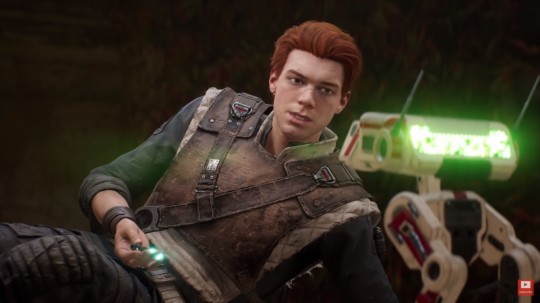
These chests are one of the rewards for exploration. They contain items that players can use to customize Cal, his lightsaber, BD-1, or the ship. While this is motivation enough at the beginning of the game, this customization serves no purpose beyond cosmetics. It comes down to which poncho or paint job players find more aesthetically pleasing. I love that the game developers let players change lightsaber colors, but I wish these different ponchos and lightsaber parts had some sort of effect on the gameplay, such as restoring more of Cal’s Force meter or refilling a small amount of health after defeating an enemy.

Force echoes serve as another reward for exploring. Cal uncovers lore from past events by reaching out through these Force echoes. They rounded out the worlds nicely and added to the feeling that they were lived in, real places in the galaxy. The final element of exploration is BD-1′s scans. While you are running around, BD-1 will occasionally crawl down off Cal’s back and scramble over to something the droid wants to scan. These unlock data entries on the planet, its flora and fauna, the Empire, or other characters. This is all fine and dandy, but the level of exploration the game developers expect players to do with all of the backtracking involved needs to reward me with more than just basic lore, especially when some of the entries feel like the writers did not even try when they wrote them. Is an entry on a storage crate telling me that the Empire stored materials in it really worth stopping to scan? I think not. Instead, the game developers could have really motivated me to explore more by throwing in a few interesting side quests or fun Easter eggs. Maybe players could stumble upon active Imperial transmissions and overhear characters like Tarkin or Thrawn. Maybe players could find an abandoned Imperial camp and watch Imperial or Rebel propaganda over a holofeed that was left on. They could have even hidden a squadron of battle droids that were forgotten from the Clone Wars. So many possibilities!

Jedi: Fallen Order is far from a perfect game and has so much unrealized potential, but I would not trade away my time with it. For every flaw, I can point to a positive, and vice versa. At the end of the day, I got to be a Jedi, and that is good enough for me.
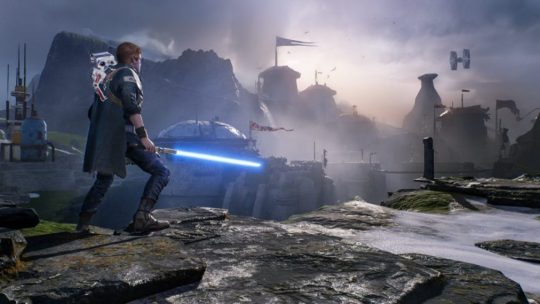
6 notes
·
View notes